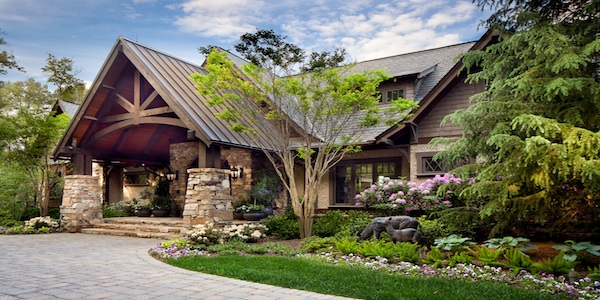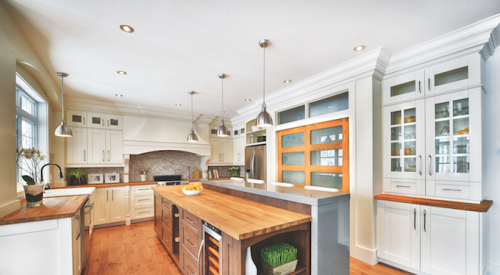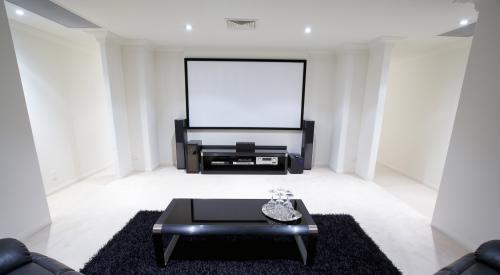Remember when, in 1989, American soldiers blasted heavy metal music outside the Vatican embassy where Panamanian dictator General Noriega was hiding? After six days he surrendered. From Iraq to Israel to Panama, loud noises are part of the interrogators playbook. Some say it's torture. The participants in a recent viral video would agree. Noise can drive you crazy.
The video shows a Tampa apartment dweller and her over-sized son in the midst of a full scale noise war with her upstairs neighbor. She said he made too much noise. He had a bad habit of walking around flushing the toilet that was making her batty. She retaliated with high volume bass in the middle of the night, pointed at her ceiling. “Be very afraid of me because I’m very vengeful,” she says to the surprised tenant in the video. “Stop stumbling on my head and I’ll stop turning up the bass.” More threats of violence continued for 10 minutes, and they were all about noise. Turns out there are thousands of videos on YouTube about getting revenge on noisy neighbors.
It doesn't have to be that way if you plan correctly during construction, say Marcus and Pearl Katz from their new estate home called Deerhaven, on a mountain top in Asheville, North Carolina, just over the hill from the Biltmore and few minutes from downtown. Before Marcus and his wife bought what would become the Deerhaven estate, they noticed it was a bit noisy. “We spent three nights there before we bought it,” said Marcus. “We loved the property, and we could see the possibility of what it could become. But in other parts of the house, we could hear people walking around. So first we wanted to fix that.”
After completing the purchase, the Katzes set out to “isolate” the noise--that’s how the sound gurus talk about it--but soon realized they'd have to take this 12,000 square foot home down to the studs and start again. When they finished three years later, their new home, guest house, summer kitchen, and five-acre garden was better than they ever dreamt it would be.
It's certainly the quietest, and for that, the Katzes thank North Carolina acoustical engineer Noral Stewart. Stewart spends most of his time isolating the sound in big buildings — churches, offices, condos — with lots of people making lots of noises in big rooms surrounded by lots of noise amplifying hard surfaces. Stewart says that sound, the enemy, travels through structures in two channels: Air and building materials.
Both Marcus Katz and Noral Stewart knew they needed to isolate the sound in the ceilings, floors and walls with a recycled and fireproof sound dampening cellulose material. Heavy doors were also a no-brainer. Bu that's just Sound Isolation 101. For Deerhaven, Katz and Stewart went full-on post-doctoral. “I’ve never heard of so much sound isolation being installed in one home,” Stewart said. “Some higher end apartments or office buildings or churches use these techniques, but I’ve never heard about this much sound isolation on a single family home. And it worked very well.”
Double Studs For Quieter Walls
Let’s go behind the walls for a moment: Even if you dampen the sound in the air with insulation, the wooden studs and other building materials still transmit sound with vibrations. Mission No. 1 is to interrupt that. Like most single family homes, Deerhaven's walls contained sheet rock that was supported by a single set of studs, made from wood. The sheet rock in the living room wall, for example, was held up by the same studs that maintained the sheet rock in the adjoining room. Not good: Think of holding a glass container to a wall then putting your ear up to it. Instant eavesdropping equipment: Sound travels though the solid materials. But if you disconnect the materials, you dampen the sound.
“We used a double set of studs where he had rooms with the walls thick enough where we could put two sets of studs,” Stewart says. “So each side of the wall is supported on a separate set of studs that are not connected." No more noise wandering from wall to wall through the studs. As for the wall itself, another noisy culprit is sheetrock. “We used a special kind of sheetrock that is really more of a sound board,” said Ben Walker, general contractor for the Deerhaven project. “We used it in double layers, and it kills the sound. It's more expensive, but really does the job.”
Much like famous comedians or musicians admiring the work of someone most other people have never heard of, the contractors at Deerhaven rave about the one thing in the house that you can't see: Soundproofing. “It really sets this place apart,” said stone mason Dale Pressley, who spent two years laying tons of noisy rocks in walls and porches and gardens throughout the seven-acre estate. “It is really amazing what they did.”
Soundproofing Doors and Ceilings
Next on the sound proof list: Floors and ceilings. “On existing structures, builders are limited because they cannot raise the floors and ceilings as much as we would like to add more sound isolation,” says Stewart. “Even so, at Deerhaven, lots of rubber matting and sound proof materials significantly reduced the sound even more.” (Think from very, very low, to very, very very, very low.)
In Deerhaven's 3500-square foot guesthouse, Katz and Stewart took the sound isolation to another level. “The whole ceiling in the first floor is hung off of springs,” said Stewart. The vibration from people above—often the sound of children running and having fun—never makes it to the rooms below, where the adults night be watching Southeastern Conference football. That can get noisy too. The groans of the Georgia fans can be even louder if the Bulldogs aren't doing as well as Marcus Katz and his friends hope. But the kids upstairs never hear the pain below. “It’s a very elaborate system,” Stewart says. “You’ve got the wood floor system and then we’ve got springs hanging off of that and then there’s this whole metal frame supporting both. But it’s all held off of springs so there’s no vibration that penetrates from down to up or up to down.” The builders say it took two months to complete.
Making the Spa Serene
The spa and massage room in the estate’s main home received the same treatment: “We wanted that room to be a place of serenity and peace,” Marcus said. “But it is located under the garage.” Which of course is also super quiet. But it is still a garage. “We isolated the sound there with springs as well,” Marcus said. “And lots more sound proof material in the walls and even wall paper. There you can get your spa treatment in complete silence, except of course for the sound of moaning while joints and muscles are popped, stretched, and manipulated.
Minimizing Hard Surfaces
Stewart also showed the Katz family how to further isolate noise by reducing the amount of hard surfaces (like floors without carpets) and how to pay particular attention to noise reducing materials in the larger rooms. “They can be very echo-y,” Stewart said. “You’ve probably experienced an extreme case of that in a gymnasium. So we make sure they are aware of how to use the drapes and carpets and special wallpaper to further absorb the sound.”
All these sound isolation techniques are attached to a house that is built without squeaks, or jiggles or loose fittings of any kind. Chris, the builder, made sure of that. When you walk up any of the stairs, you could be walking up the side of a mountain, for all the give that you feel. None. “One of my guys was leaving spaces in the studs where there were not supposed to be spaces,” said Chris. “I told him we were not building a tract house and our tolerance for error was extremely low. Zero. He told me it did not make any difference because we were just going to cover it up with sheetrock, anyway. I had to let him go for that. Deerhaven is extremely solid and that reduces noise even more.”
Katz says some of the greatest things about the house are features no one can see, but they're features that some home builders are wary of because homebuyers want to spend their money on what they can see outside of walls, rather than inside them. But that is changing as more and more people like the Katz family become aware of the benefits of living in a quieter home. “We love to invite our family and friends to stay with us,” he said. “No one comes in here and says ‘Wow, this house is really, really quiet.' But it's one of the things that contributes in unseen ways to how people respond to Deerhaven when they visit."
Just think how long the next Central American strongman might be able to hold out.










